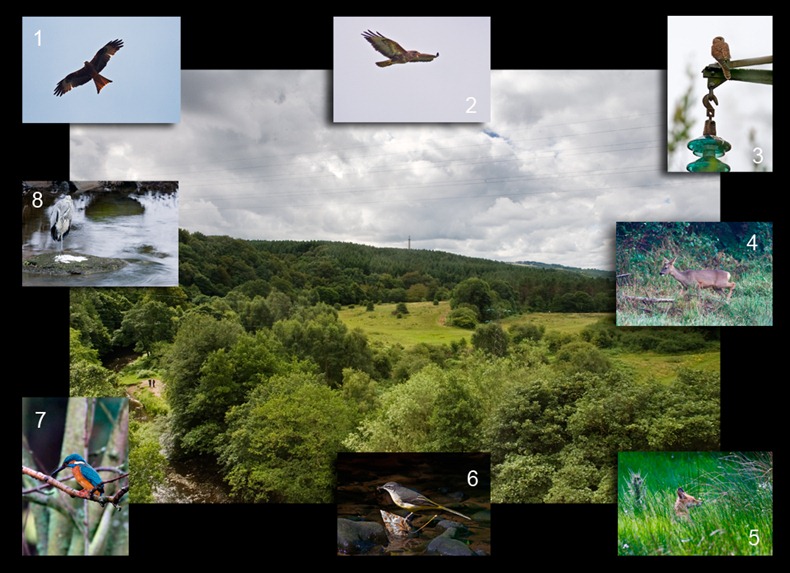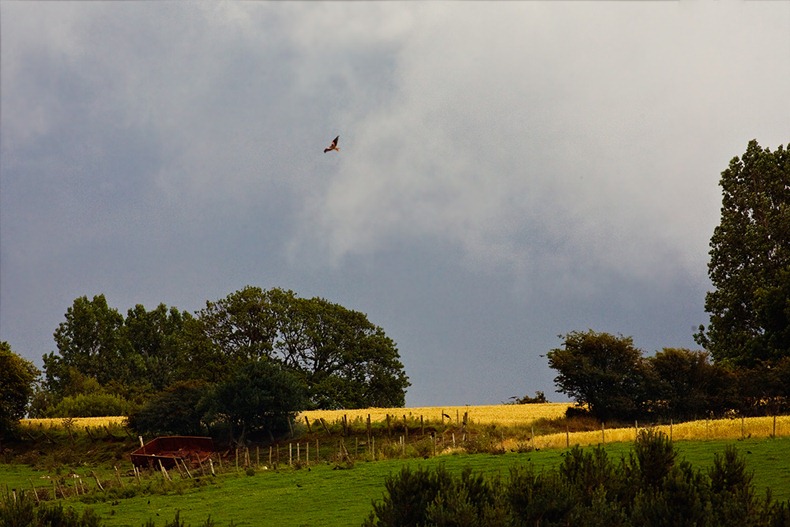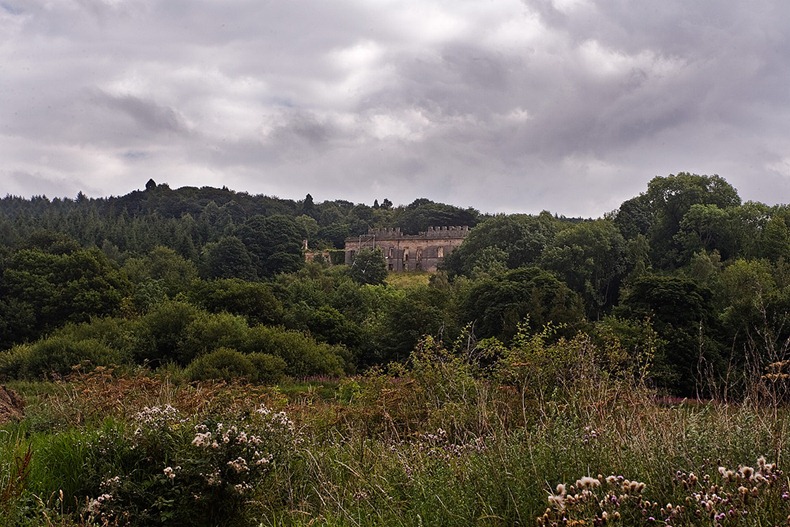Friday 30 July 2010
Sunday 25 July 2010
Bits ‘n’ bobs
| Not through want of trying, have I had little to put in this blog over the last few weeks. A combination of the weather and lack of opportunity has meant I have only had a few photographic opportunities. At this time of year you would think it would be ideal – long summer days, warm sunshine – unfortunately, during my days off, the weather has been unpredictable, windy and cloudy. Most wildlife tend to be active dawn and dusk of which I find dawn the best time to go as there is less human disturbance (who’s crazy enough to want to get up at the crack of dawn!), so it’s hard to get to location at the right time. Oddly, one of the biggest disadvantages is the vegetation. Walking through one of my local woods, it’s very hard to see anything (see image below). Birds hide in the foliage, mammals are hidden, the amount of times I have ‘stumbled’ upon a Roe deer or Fox recently, not seeing them until the last minute. The ponds I like to visit to watch Kingfishers in particularly, are covered in reeds and a layer of weed. At other times of the year, even winter, I’m happy just sitting quietly and wait for the wildlife to come to me if I’m in a wood. In the summer there are the mosquitoes and midges to contend with. Despite this, with great enthusiasm I ventured to various locations at the weekend, firstly the woodlands. |
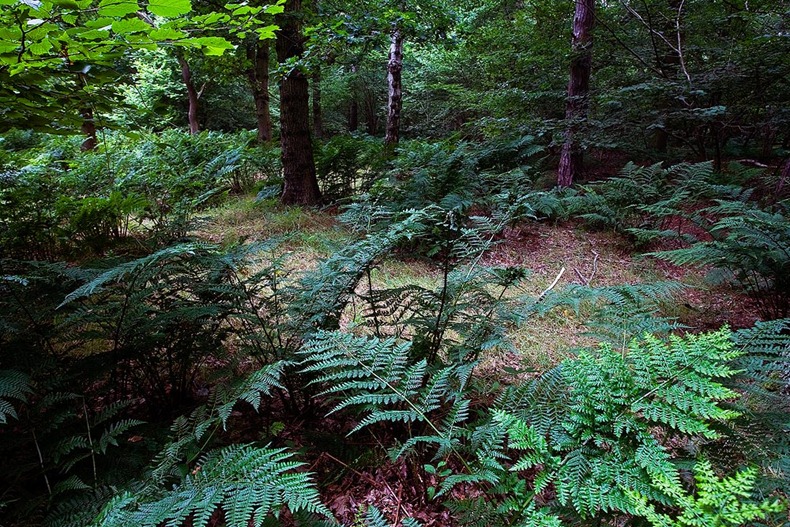 Typical woodland at this time of year |
| I arrived late, at least two hours after sunrise, and so I expected much of the mammal wildlife had taken to their day retreats, though walking along the side of the woods I came across this male Roe Deer working its way along the edges. Unfortunately, because of the foliage I was unable to get a clear image of him through my lens, so moving parallel to it, to a place which was open, I waited for it to move into sight. It didn’t show. After moving to the edge of the ripening wheat field, I saw why. Another male from an adjoining wood made an appearance and this one had gone to investigate. After a short while it moved away from the stranger, but I lost track of it in the depths of the wheat. |
 |
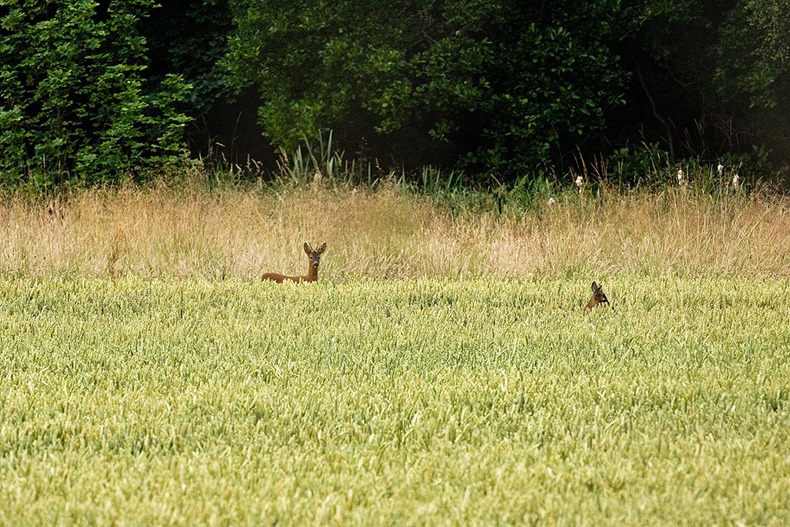 |
| Down at the lake was just as quiet as the woods with just a Heron and Little Grebe fishing. Later one Heron was chased off by another for the prime fishing spot. Both Grebe and Heron seemed to be finding plenty to eat. View of the Heron was largely obscured by reeds blowing in the wind so the images have some green streaks. |
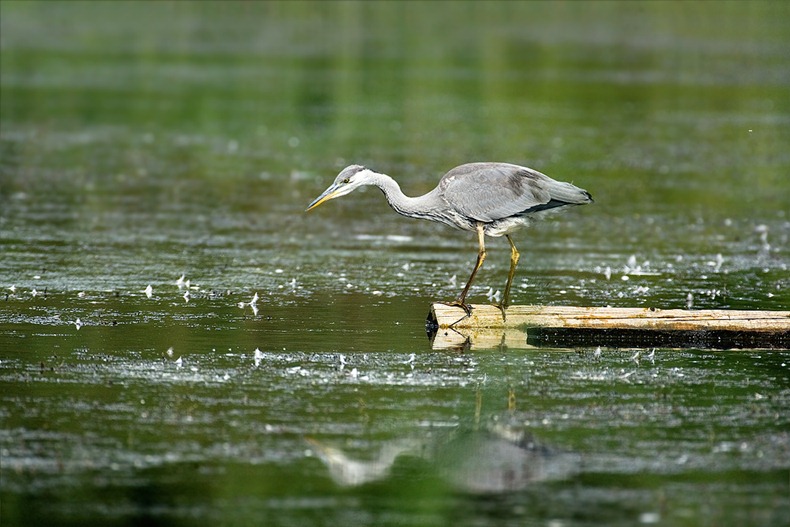 |
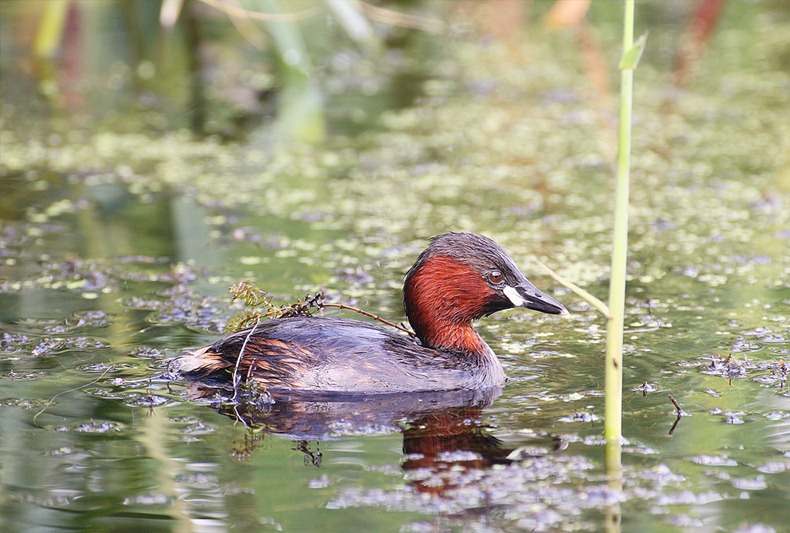 |
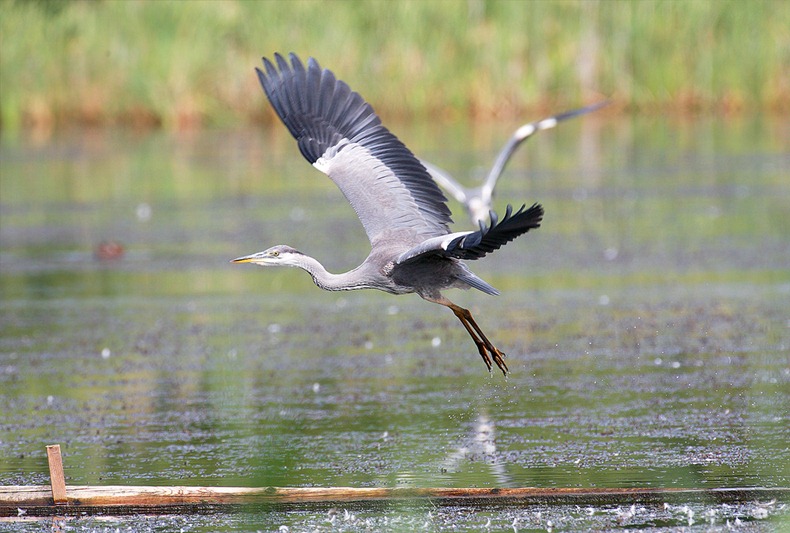 |
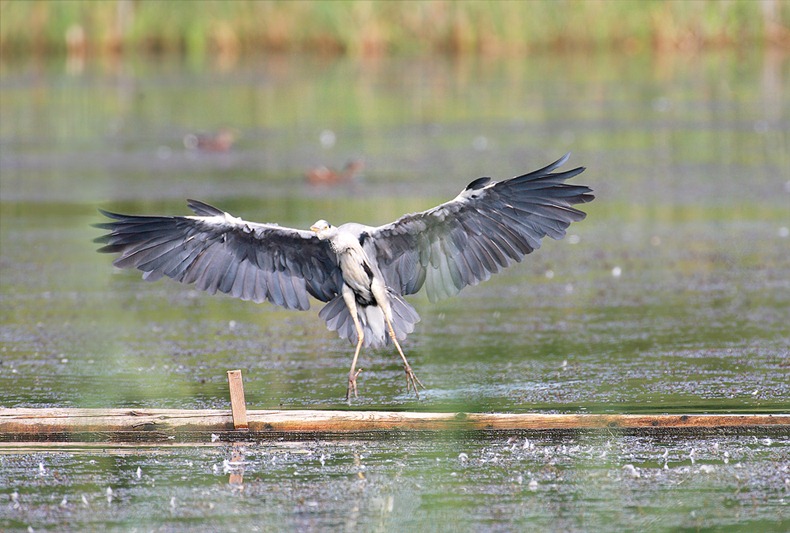 |
| On the Sunday I went to one of the local hides in the hope of seeing a Kingfisher, which, this time last year, was making a regular appearance. This year, however, the pond was covered largely by a layer of weed and the nicely placed branch used as a perch by the bird was only being used by a few juvenile Swallows. |
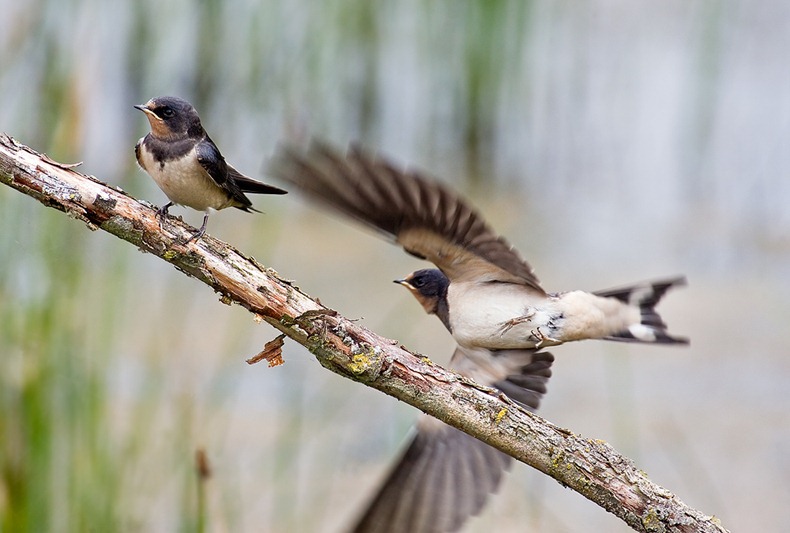 |
| Walking along the River Derwent, I found a quiet spot and sat down under a tree as it was raining on and off. After a while, a Dipper came along, working its way upstream. Despite the photographs looking quite bright, it was at a section of the river which was quite dark due to the trees on either side and so it was actually quite difficult to get an image, with the best shutter speed I was getting less than 1/200 so with a 500mm lens plus a converter, I struggled to get any sharp images at such a low shutter speed. Anyone who has watched a Dipper also know they don’t tend to stay still for very long, bobbing its head constantly. Occasionally, a Kingfisher would flash by making its high pitched call that’s often the first sign there is a Kingfisher in the area. Unfortunately, this part of the river is very popular with people out for a walk and so I haven’t managed to find where they do their fishing, guessing that it’s likely to be somewhere inaccessible and away from human disturbance. |
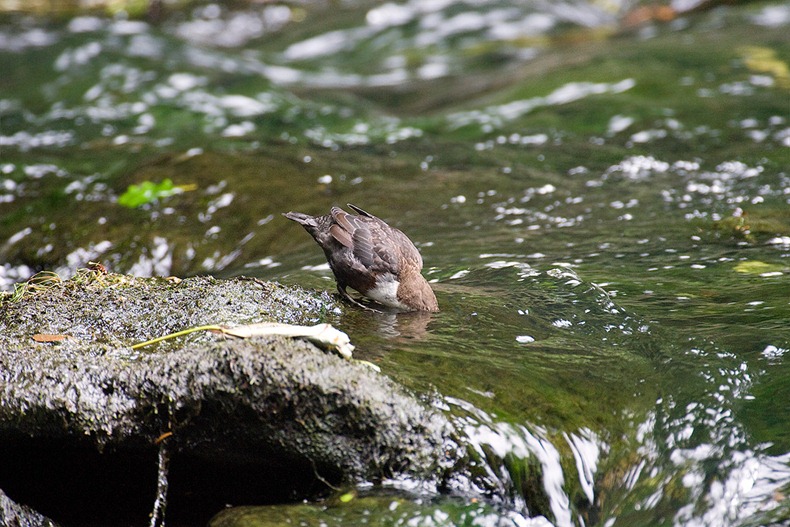 |
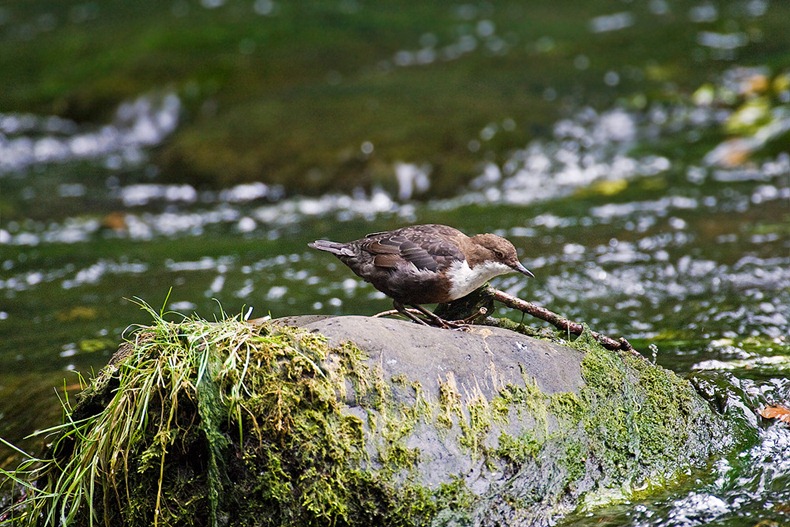 |
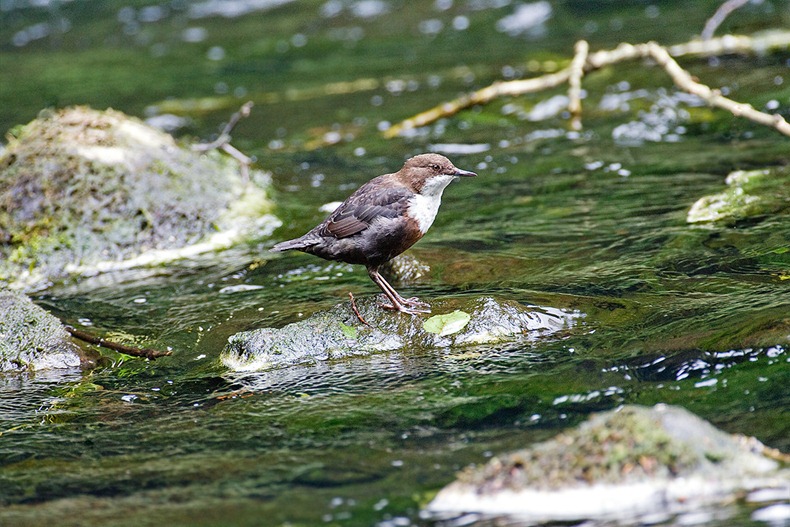 |
| With some time off work I’m hoping to get a bit of good weather and get out as much as possible. Kingfishers will be my top priority to photograph and with any luck, maybe a few Foxes thrown in. |
Sunday 4 July 2010
A frustrating day – time for a whinge
| I sometimes wonder if it’s worth it, getting up at a ridiculous time in the morning, on your day off, braving the elements, to catch a glimpse of that elusive wildlife many will never see – a Fox briefly crossing your path, a Kingfisher flashing past along the river. This weekend was one of those times where nothing seemed to go right and as a result, I wasn’t going to bother with a post this week. Up at 5.00 am, I decided to revisit Havannah Nature Reserve where a month ago I had photographed a family of Coots, but I had also hoped by getting up early enough, I might also photograph the Foxes there before human activity. With the year already more than half over, I haven’t managed to photograph a single Fox, not that I think they have become anymore rarer, just more elusive or in some instances, they seemed to have moved from the normal places I would go to see them. Having previously checked over the area I knew where a large amount of Rabbits lived from which led a narrow path back to where I believed the area where the Foxes den was, so any Foxes hunting there from early morning, would almost certainly return this way. I waited in an area where I would see anything coming and an ideal photographic setting. Sure enough, I didn’t have to wait long as in the distance I could see a Fox coming up the path so I lay down in a dip in the path so the Fox wouldn’t see me and focused on a point where it would come into view and waited. After a while I figured it should have been here by now, then heard someone shouting to their dog, looked up and saw a person with their two dogs walking where the Fox had been. Obviously it had now gone. I admit, I was just a little miffed that at 6.50 am, just at the time the Fox was about to enter frame, at this particular remote part of the reserve, someone would come charging in. A deep breath, and I moved on to my next planned spot. Five minutes away was a place where the Rabbits were reasonably approachable from a distance and when I arrived there were a number of them, particularly young ones, grazing in the early morning sunlight, perfectly lighting them for a photograph not to mention the ‘cute factor’. I lay down with my camera and as they settled I slowly crawled towards them. Each time they seemed unsettled I stopped, looked uninterested in them, then, when they carried on eating I moved forward again. Almost within perfect distance, they suddenly fled into their burrows – two joggers were passing by. Ok I thought, I shall try the ‘Coot family’ on the large pond. Arriving there they were all present and accounted for as were two Herons, so I let them get used to my presence and slowly moved forward as they had moved away at my initial appearance. I was just about to take some photos of the approaching Herons when along came a dog and its owner, the dog went crashing into the pond chasing off the Herons and the Coots into the reed bed. I may have, just possibly, on the odd occasions, mentioned my distain for dog walkers. Not that I have any problems with people owning dogs and taking them out for walks, but why at a nature reserve? There are plenty of places where they could walk them. Why a nature reserve if you are not interested in nature? And why do they have so little thought for others? And why must they insist in wrapping up there doggy doings in little plastic bags, only to dump them out in the open? And why would anyone want to have 5 dogs of all different sizes? That’s just plain weird. Anyway, this person could see what I was doing at 7.20 am in the morning and yet made no attempt to keep their dog under control but in fact seemed to encourage the dog to chase after the birds there. |
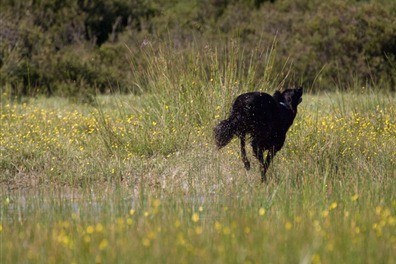 | 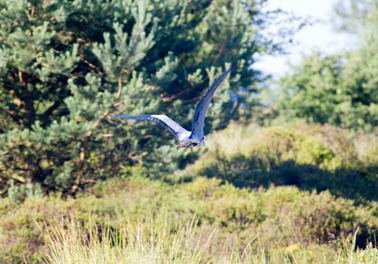 |
| After a few minutes, they left, I stayed, let the wildlife settle again and managed to get a few images of the Coots and a Mallard there before, again, in bound another dog complete with indifferent owner, scattering the birds again. By this time, I was really fed up and decided to have a walk around but everywhere I went more dogs and their owners so I decided to give up and instead have a walk over to Big Waters reserve and look in at the two hides they have there. |
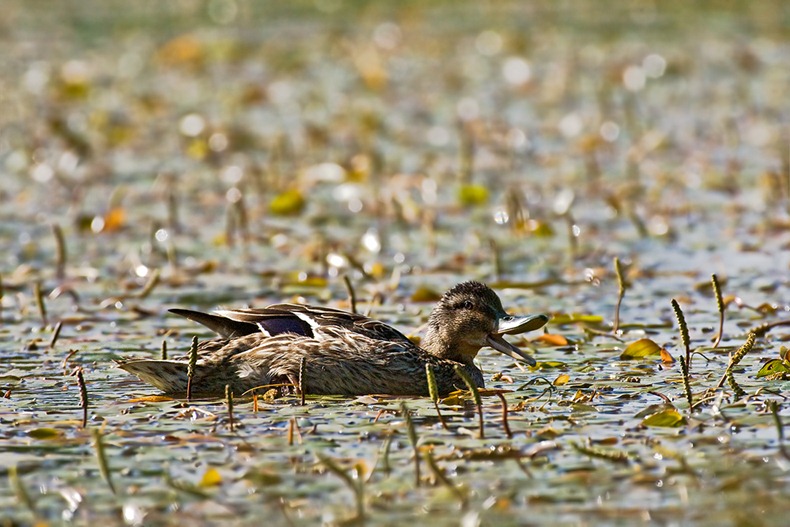 |
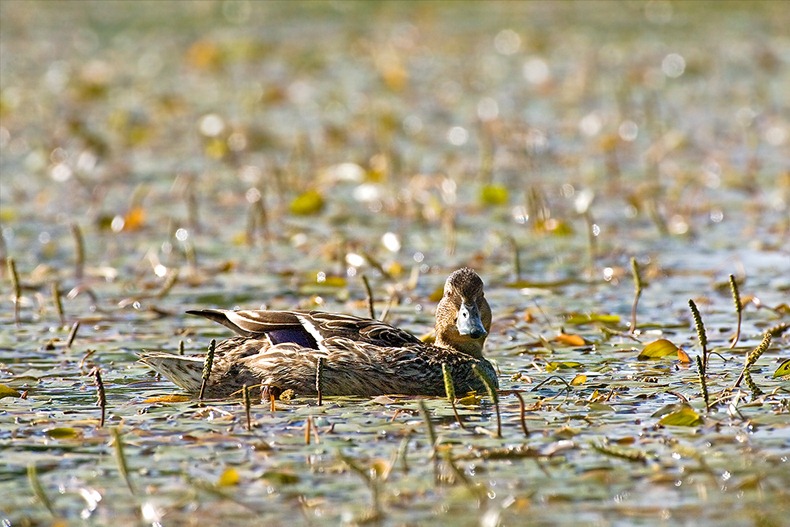 |
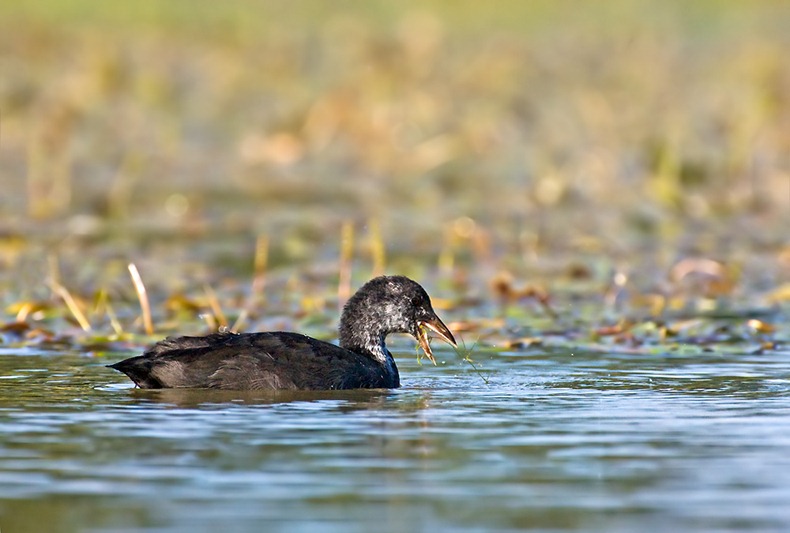 |
 |
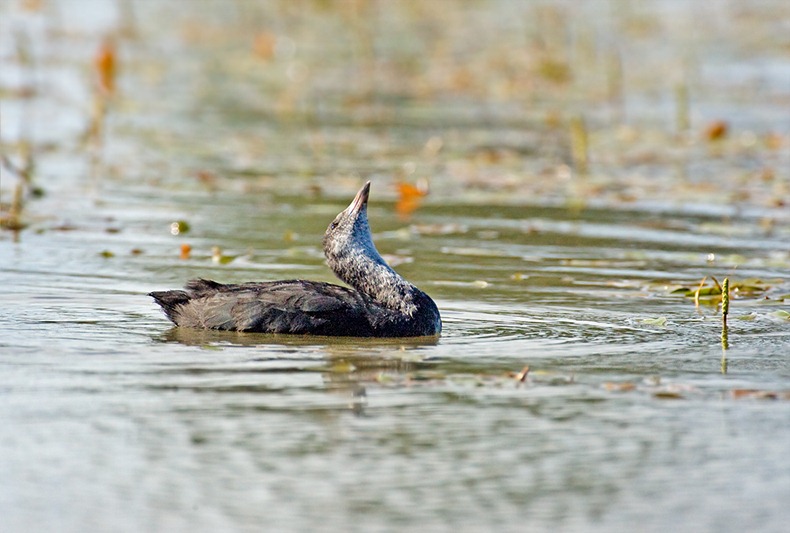 |
| The hides at Big Waters are a strange place. Usually lots of people there with cameras, scopes and binoculars but all talking to each other and with seemingly little interest in watching nature and enjoying the moment, the Loch Ness monster could go past and I don’t think anyone would notice – of course I could simply becoming a big anti social grouch. It’s one of those places where you could spend days all day seeing little apart from the usual wildlife but you may just get lucky and see an Otter close up with its cubs. Alas, this day was not to be the latter and all that was stirring were some noisy Turns on the small man made island. |
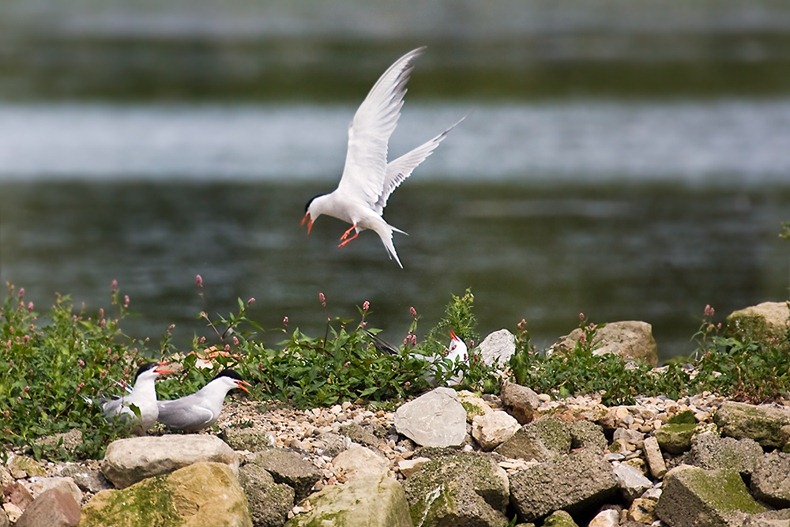 |
| Further afield from Big Waters is a small bridge crossing over the busy highway leading out of Newcastle heading north. On a number of occasions I have seen Kestrels hunting along the motorways verge, I’ve often thought it would make a great photo if, whilst on the bridge, I could get an image of a Kestrel hovering over the road with the traffic in the background. As I approached the bridge, there was a Kestrel doing exactly that but by the time I reached the ideal view point it was gone, and although I waited half and hour or so, it didn’t return. I wondered around for another few hours, including returning to the bridge, but with little joy. A very frustrating day. |
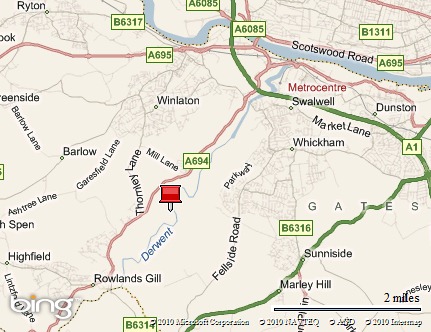

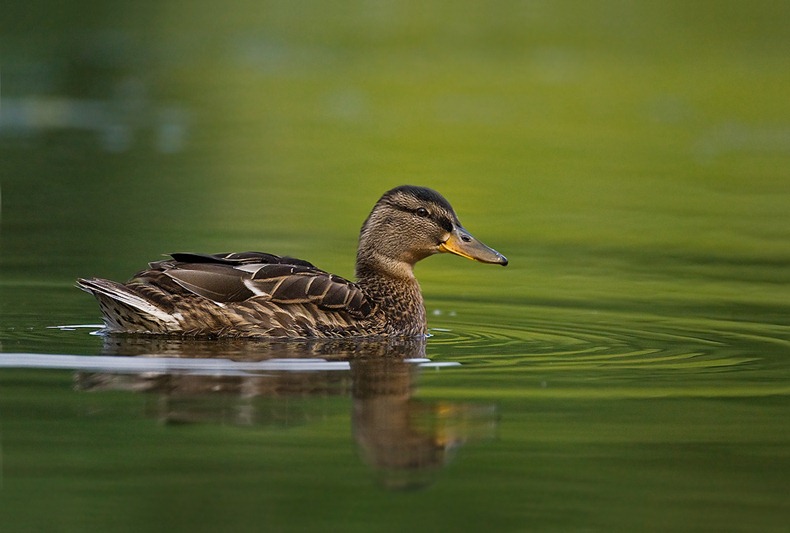
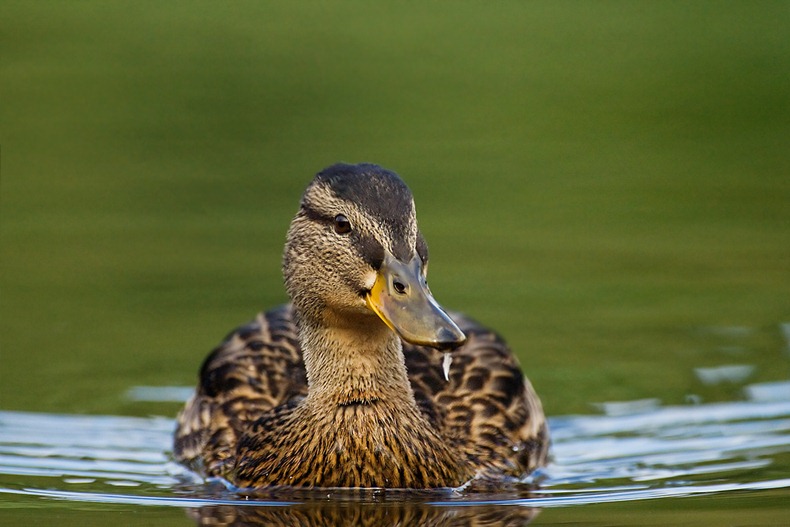
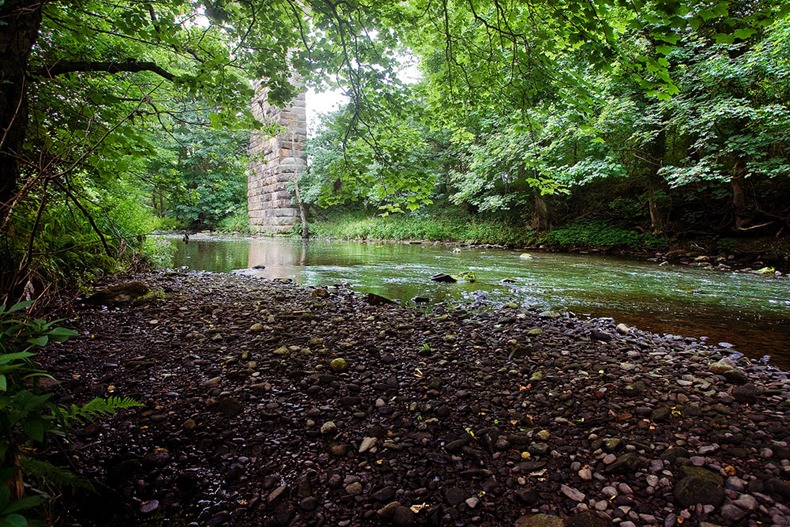
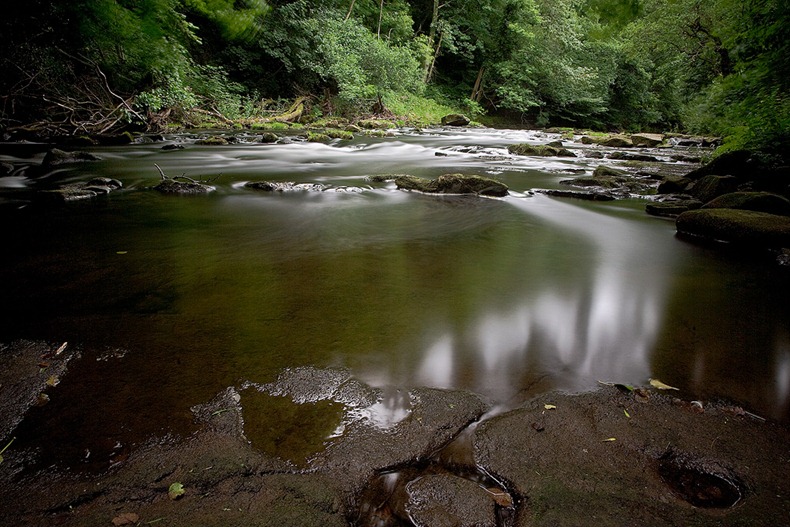
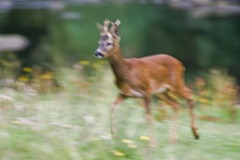 Having been taking some landscape shots and only just put back on my telephoto lens plus converter in readiness for what I thought would be my next opportunity – Kites – I still had my old settings on and surprised at seeing the animal at a place and time busy with dog walkers, I forgot to change the settings so the quick images I managed to get were hand held at a low shutter speed – 1/20th. Needless to say the images were just a smidgen blurry, (see left). Before I realised what I had done and could change it, the young buck had seen me and legged it. Trying to keep the obscenities at my bungling incompetency down to a quiet minimum, I proceeded on my way with my journey.
Having been taking some landscape shots and only just put back on my telephoto lens plus converter in readiness for what I thought would be my next opportunity – Kites – I still had my old settings on and surprised at seeing the animal at a place and time busy with dog walkers, I forgot to change the settings so the quick images I managed to get were hand held at a low shutter speed – 1/20th. Needless to say the images were just a smidgen blurry, (see left). Before I realised what I had done and could change it, the young buck had seen me and legged it. Trying to keep the obscenities at my bungling incompetency down to a quiet minimum, I proceeded on my way with my journey.